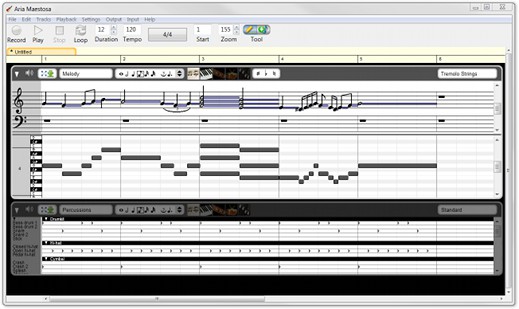

- Aria maestosa add soundfont how to#
- Aria maestosa add soundfont software#
- Aria maestosa add soundfont Pc#
- Aria maestosa add soundfont free#
One standalone soft synth that is available for the Pi is called Yoshimi. The problem is that few of them are ready built for the Pi and I wasn’t willing to expend too much time on cross compiling. There are a number of soft synths available for Linux and I started to experiment with these as additional sound sources. I was a bit concerned as I had to build from source to get the latest version but I was very pleased when it built with no problems out of the box! As a bonus it also built with no problems on the Pi. In the end I came across a player called Aria Maestosa ( right ) which seemed to do everything that I wanted.
Aria maestosa add soundfont software#
This proved more difficult than I expected, partly because such a thing seems to be quite rare and partly because not all software is available ready compiled for the Pi’s ARM processor. I was looking for a MIDI player with a GUI that I could use to control the playback, mute tracks etc.


Having got the sound generation sorted then I needed something on the Pi that could play MIDI files, for example to add rhythm or backing accompaniment. At the moment I’m only using two of the inputs – one from the DS330 and one from the Pi. However I also bought a cheap mono Behringer mixer ( right ) which gives a bit more flexibility for introducing other sound sources. The sound output from the DS330 is fed into the external input of the Clavinova. It has a single MIDI input and can be controlled either from the Pi or directly from my Windsynth if necessary. These were manufactured by Roland and had the same sound set as their more expensive devices. There are many of these available and I went for a Boss Dr Synth DS330 ( left ). In the end I went down a different route and bought a stand alone second hand MIDI sound module.
Aria maestosa add soundfont free#
In the past I have used a HiFiBerry DAC to provide better quality output but, of course, the version that I’ve got is incompatible with the later Pi versions 😦 The other option was to use a USB sound dongle but I was concerned about latency for real time playing and also I had no free USB ports on the Pi! It’s OK for basic experimentation but not for anything serious. This worked reasonably well but the main issue is that the standard sound output on the Pi is not very good.

My initial idea was to use the FluidSynth soundfont player and the Qsynth GUI as its front end running on the Raspberry Pi as a sound generator. The GUI can be driven with just a mouse which makes it ideal for this application. A screenshot is shown above with my Keystation Mini 32 linked to the Yoshimi soft synth. Linking MIDI inputs and outputs can be done using the aconnect command line program but there is also a rather neat GUI version called aconnectguiwhich is available as a standard package. It will also do all the MIDI routing and will even merge data streams when two programs are writing to the same MIDI channel. I find that it works very well and auto-detects all devices with MIDI capability.
Aria maestosa add soundfont Pc#
I use the ALSA sound system ( 1, 2 ) on both my desktop PC and the Raspberry Pi. Note that the screenshots below are from my desktop PC as I don’t have a way of capturing images on the Raspberry Pi. Inevitably it wasn’t quite as straightforward as I’d hoped but I got there in the end.
Aria maestosa add soundfont how to#
At that point I had the music display part up and running and was wondering how to integrate some MIDI based instruments. This is a follow up from the initial post about the Digital Music Stand.


 0 kommentar(er)
0 kommentar(er)
